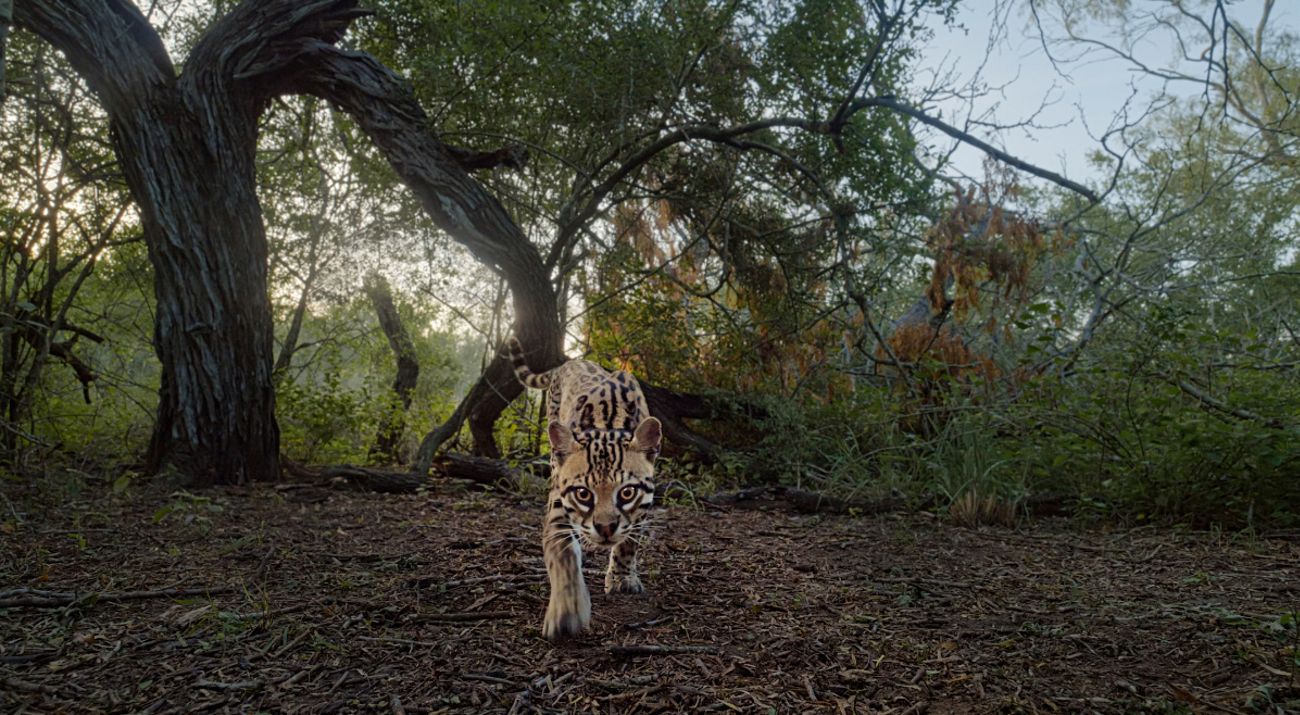Nature Briefs
Sitka deer rely on Alaska’s old-growth forests, and rare Amargosa toads depend on a short stretch of river in the northern Mojave Desert.


Long-distance relationships are tough—especially for the remaining ocelots in the United States.
A breathtakingly few—under 100—are left. Ocelots once ranged throughout much of Texas and as far east as Louisiana and Arkansas. Today, habitat loss and fragmentation have confined them to the thorny scrublands of South Texas, and highways, cities and farm fields isolate groups from each other. That means they have fewer mate choices, making their populations susceptible to problems associated with inbreeding, like reduced disease tolerance. With such small numbers, every ocelot that’s cut off from others or lost to a vehicle strike is devastating.
“The Nature Conservancy and many partners have worked for years to connect and improve habitat for ocelots,” says Sonia Nájera, TNC’s landscape initiatives director for Texas. Collaboration has established protected corridors, giving ocelots room to roam. Efforts to plant native thorn forest bushes and trees, many of which are grown at TNC’s Lennox Foundation Southmost Preserve, are helping to provide critical shelter.
Building from these habitat improvements, TNC is supporting interconnected strategies to increase the number of ocelots in the wild.
In 2024, the U.S. Fish and Wildlife Service (FWS) approved a safe harbor agreement with the East Foundation, a Texas nonprofit and landowner that promotes land stewardship through ranching. The agreement enables the foundation and private landowners in specific South Texas counties to receive formal assurances that if they contribute to ocelot recovery, the FWS will not require additional or different management activities by the participants without their consent. “Private ranchlands offer some of the best intact habitat in South Texas,” says Sonia. “Allowing ranchers to continue their work is essential for the long-term recovery of ocelots and many other native species.”
Later in 2024, partners broke ground on a $20 million ocelot conservation facility at the Caesar Kleberg Wildlife Research Institute, the first in the nation dedicated to housing ocelots for breeding purposes. Located at Texas A&M University-Kingsville, it’s expected to be completed in the next year and will feature an environment for young ocelots to learn natural behaviors so they can be released onto new lands, including those enrolled in the safe harbor agreement.
According to Sonia, “the habitat that ocelots need is often maligned,” due to its thorny appearance. That’s why the next phase of ocelot conservation for TNC aims to learn from landowners about their needs and objectives. “We are embarking on a landowner learning tour to develop tailored practices that will allow them to meet their goals while also preserving brush in patches large enough to function for ocelots. It is much easier to save existing brush than to replant from scratch.”
For Sonia, this work is personal. “Growing up in this region, I remember learning about saving forests and animals in far-off places,” she says. “But protecting South Texas is vital for wildlife, and it is rewarding to be a part of the real progress happening here."





Scroll through more articles